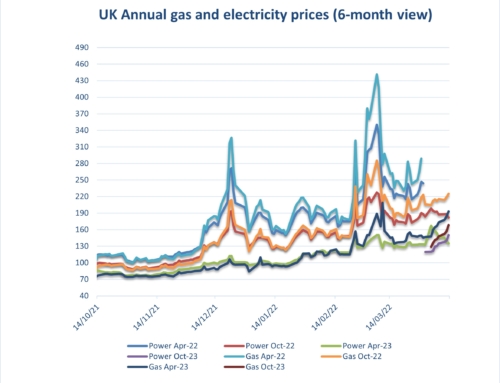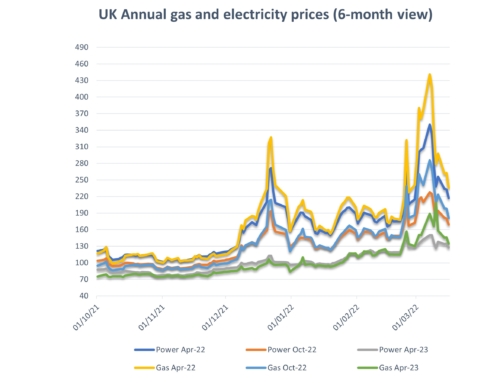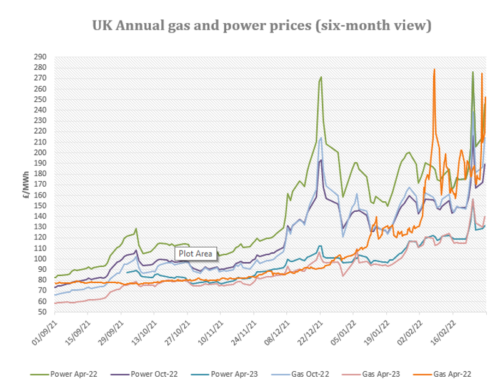Energy costs: The market has been coming down over the last couple of weeks following the de-escalation between US and Iran, tumbling oil prices and high wind levels accompanied with above seasonal norm temperatures. The market is almost reaching 2016 lows but temperatures are expected to go below seasonal norm for a cold snap over the next week which may push prices up but reports suggest this will return to normal for the end of January.
Upside:
French Nuclear Issues – Further French strikes could continue to limit the generation output and potential imports to the UK which could increase prices.
Outages – There have been various unplanned outages over the last two weeks at Aasta Hansteen and Troll fields despite the low demand.
Downside:
Gas Storage – This remains significantly high at 82% fullness; compared to 62% fullness this time last year. However, this is starting to reduce due to the slowdown in tanker deliveries.
Hydropower – French reservoir levels are at an all-time high (20% higher than normal levels) which is suggesting will help supply in the event of a cold snap.
LNG Deliveries – US are expecting to increase LNG export by 30% this year and 55% next year which we should expect further LNG deliveries.
Oil Pricing – Oil prices have tumbled due to high US output and rising inventories although the recent signing of US-China’s trade deal has increased prices slightly.
Could go either way:
Brexit/Sterling – The withdrawal agreement has been passed by Parliament, albeit with objections from the House of Lords. So, we will be officially leaving the EU on 31st January. However, there remains the trade deal negotiations which the Government is adamant need to be resolved by the end of 2020. This does still fuel fears of a “Hard Brexit”, leaving anxiety and uncertainty for both energy markets and exchange rates.
Carbon (CO2) Markets – Prices remain low, but have shown some signs of recovery in recent days.
Coal Markets – Coal prices have been rallying since the end of last year due to South African flooding and Indian and China purchasing more coal recently. Although, the gains have been wiped, it does appear this market will remain volatile.
Temperatures – Predictions are that temperatures will hit a cold snap over the next week but should be returning to normal for the end of the month.
Wind output – Wind generation is predicted to reduce but should be returning to normal for the end of the month.
Non-energy costs:
On the electricity side organisations will see further increases in pass through costs from both government and industry infrastructure providers in the coming months as distribution, Electricity Market Reform (EMR),Capacity Market and Energy Intensive Industries (EII) charges are ramped up.
Climate change levy (CCL) increased significantly from April 1st to offset the loss of CRC to Government revenues. Please see the attached pass through charge information for details. Your CCA related CCL exemption rates will increase at the same time (Gas 78%, Electricity 93%). Please ensure your PP11 forms are updated and sent through.
Warning: more gas suppliers are passing through backdated Un-identified Gas (UIG) charges for 2017/18. Please contact us if you have any questions or unusual gas bills.
Is your organisation covered by the new Streamlined Energy and Carbon Reporting (SECR) scheme?
Designed to replace in part the Carbon Reduction Commitment (CRC) which ends this year and to follow on from the energy savings recommendations generated by ESOS compliance. Note, SECR will cover a wider scope of organisations than CRC and ESOS do. Full details are attached below.
SECR will require all large enterprises to disclose within their annual financial filing obligations to Companies House, their greenhouse gas emissions, energy usage (from gas, electricity and transportation as a minimum), energy efficiency actions and progress against at least one intensity ratio.
The scheme came into effect on April 1st, 2019 and will be required to be included in the first set of accounts published for financial years starting after this date.
The scheme covers publicly quoted companies (extending their current disclosure requirements) and UK incorporated companies or LLPs with two or more of the following.
- More than 250 employees
- A turnover in excess of £36 million
- A balance sheet in excess of £18 million.
UK subsidiaries, who meet the eligibility criteria, but are covered by a parent group’s report (unless the parent group is registered outside the UK) and companies using less than 40,000 kWh of energy during the reporting year do not have to provide disclosure. Note the reporting year should be aligned to your financial year.
Are you eligible for an EII rebate?
Under current rules, if you qualify at an industry sector level and your business passes the 20% electricity intensity test you may qualify for exemption to CFD and RO charges. Please see the attached Government RO/CFD guidance document and give me a call to discuss this further.
A copy of our detailed market report is available: Eneco Market Information mid Jan 2020
Gas and electricity prices from 2009 to date are available here: Eneco Gas and Electricity Pricing Trends Sept 2009 to mid Jan 2020
A copy of our environmental charges and Climate Change Levy rates from 2012 to date: Environmental Pass Through Charges and CCL ppkWh Updated 05.11.19
A copy of RO/CFD guidance document: RO_CFD_Guidance_Revised_July_2018
SECR: SECR EA Guidelines




